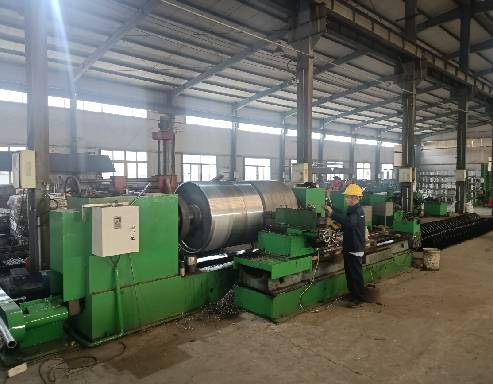 Afrikaans
Afrikaans  Albanian
Albanian  Amharic
Amharic  Arabic
Arabic  Armenian
Armenian  Azerbaijani
Azerbaijani  Basque
Basque  Belarusian
Belarusian  Bengali
Bengali  Bosnian
Bosnian  Bulgarian
Bulgarian  Catalan
Catalan  Cebuano
Cebuano  Corsican
Corsican  Croatian
Croatian  Czech
Czech  Danish
Danish  Dutch
Dutch  English
English  Esperanto
Esperanto  Estonian
Estonian  Finnish
Finnish  French
French  Frisian
Frisian  Galician
Galician  Georgian
Georgian  German
German  Greek
Greek  Gujarati
Gujarati  Haitian Creole
Haitian Creole  hausa
hausa  hawaiian
hawaiian  Hebrew
Hebrew  Hindi
Hindi  Miao
Miao  Hungarian
Hungarian  Icelandic
Icelandic  igbo
igbo  Indonesian
Indonesian  irish
irish  Italian
Italian  Japanese
Japanese  Javanese
Javanese  Kannada
Kannada  kazakh
kazakh  Khmer
Khmer  Rwandese
Rwandese  Korean
Korean  Kurdish
Kurdish  Kyrgyz
Kyrgyz  Lao
Lao  Latin
Latin  Latvian
Latvian  Lithuanian
Lithuanian  Luxembourgish
Luxembourgish  Macedonian
Macedonian  Malgashi
Malgashi  Malay
Malay  Malayalam
Malayalam  Maltese
Maltese  Maori
Maori  Marathi
Marathi  Mongolian
Mongolian  Myanmar
Myanmar  Nepali
Nepali  Norwegian
Norwegian  Norwegian
Norwegian  Occitan
Occitan  Pashto
Pashto  Persian
Persian  Polish
Polish  Portuguese
Portuguese  Punjabi
Punjabi  Romanian
Romanian  Russian
Russian  Samoan
Samoan  Scottish Gaelic
Scottish Gaelic  Serbian
Serbian  Sesotho
Sesotho  Shona
Shona  Sindhi
Sindhi  Sinhala
Sinhala  Slovak
Slovak  Slovenian
Slovenian  Somali
Somali  Spanish
Spanish  Sundanese
Sundanese  Swahili
Swahili  Swedish
Swedish  Tagalog
Tagalog  Tajik
Tajik  Tamil
Tamil  Tatar
Tatar  Telugu
Telugu  Thai
Thai  Turkish
Turkish  Turkmen
Turkmen  Ukrainian
Ukrainian  Urdu
Urdu  Uighur
Uighur  Uzbek
Uzbek  Vietnamese
Vietnamese  Welsh
Welsh  Bantu
Bantu  Yiddish
Yiddish  Yoruba
Yoruba  Zulu
Zulu High-Quality Rubber Idler Rollers for Optimal Performance
Understanding Rubber Idler Rollers A Key Component in Conveyor Systems
Rubber idler rollers play a crucial role in various industrial applications, particularly in conveyor systems. These components are essential for the smooth operation of material handling processes across several sectors, including manufacturing, mining, and agriculture. In this article, we will explore the significance of rubber idler rollers, their design, benefits, and common applications.
What are Rubber Idler Rollers?
Rubber idler rollers are cylindrical components that support the conveyor belt during its operation. They are typically made of durable rubber material, which provides enhanced grip and reduces slippage. These rollers do not transmit any driving force as they merely guide the belt and help maintain proper tension and alignment. The use of rubber in their construction provides a level of flexibility and resilience, making them ideal for absorbing shocks and vibrations that occur during the conveying of materials.
Design and Features
The design of rubber idler rollers varies based on their specific applications. Generally, they come in different sizes and shapes to accommodate various conveyor belt widths and load capacities. Some of the key features include
1. Material Composition High-quality rubber compounds are used to manufacture idler rollers, ensuring resistance to wear, tear, and environmental factors such as moisture and chemicals.
2. Internal Structure Many rubber idler rollers are reinforced with steel or plastic components to enhance their strength and durability.
3. Sealing Mechanisms Effective sealing options are integrated to prevent dust and moisture from entering the roller, which prolongs the lifespan of the bearings and internal components.
4. Coating Options Depending on the application, idler rollers can have different surface textures (smooth or textured) to cater to the frictional needs of the conveyor belt.
Benefits of Using Rubber Idler Rollers
rubber idler roller

1. Reduced Noise Levels The rubber material contributes to quieter operations compared to metal idlers, making it suitable for environments where noise reduction is essential.
2. Enhanced Grip Rubber idler rollers provide better traction for conveyor belts, thus minimizing slippage and improving overall efficiency.
3. Shock Absorption The inherent flexibility of rubber allows these rollers to absorb shocks, which protects other components of the conveyor system and ensures longevity.
4. Corrosion Resistance Rubber's resistance to moisture and chemicals enhances the durability of idler rollers, especially in harsh environmental conditions.
5. Maintenance Generally, rubber idler rollers require less maintenance than their metal counterparts, reducing downtime and operational costs.
Applications
Rubber idler rollers are widely used in various industries, including
- Mining For transporting mined materials across conveyor belts. - Agriculture In equipment that moves grain, fertilizers, and other agricultural products. - Manufacturing In assembly lines where the movement of parts is critical for productivity.
Conclusion
Rubber idler rollers are indispensable components in the realm of material handling. Their design, made from high-quality rubber, not only enhances the efficiency of conveyor systems but also contributes to longevity and reduced maintenance needs. Understanding the characteristics and applications of rubber idler rollers is essential for industries that rely on robust and efficient conveyor solutions, making them a valuable investment in any material handling operation.
-
Revolutionizing Conveyor Reliability with Advanced Rubber Lagging PulleysNewsJul.22,2025
-
Powering Precision and Durability with Expert Manufacturers of Conveyor ComponentsNewsJul.22,2025
-
Optimizing Conveyor Systems with Advanced Conveyor AccessoriesNewsJul.22,2025
-
Maximize Conveyor Efficiency with Quality Conveyor Idler PulleysNewsJul.22,2025
-
Future-Proof Your Conveyor System with High-Performance Polyurethane RollerNewsJul.22,2025
-
Driving Efficiency Forward with Quality Idlers and RollersNewsJul.22,2025





























